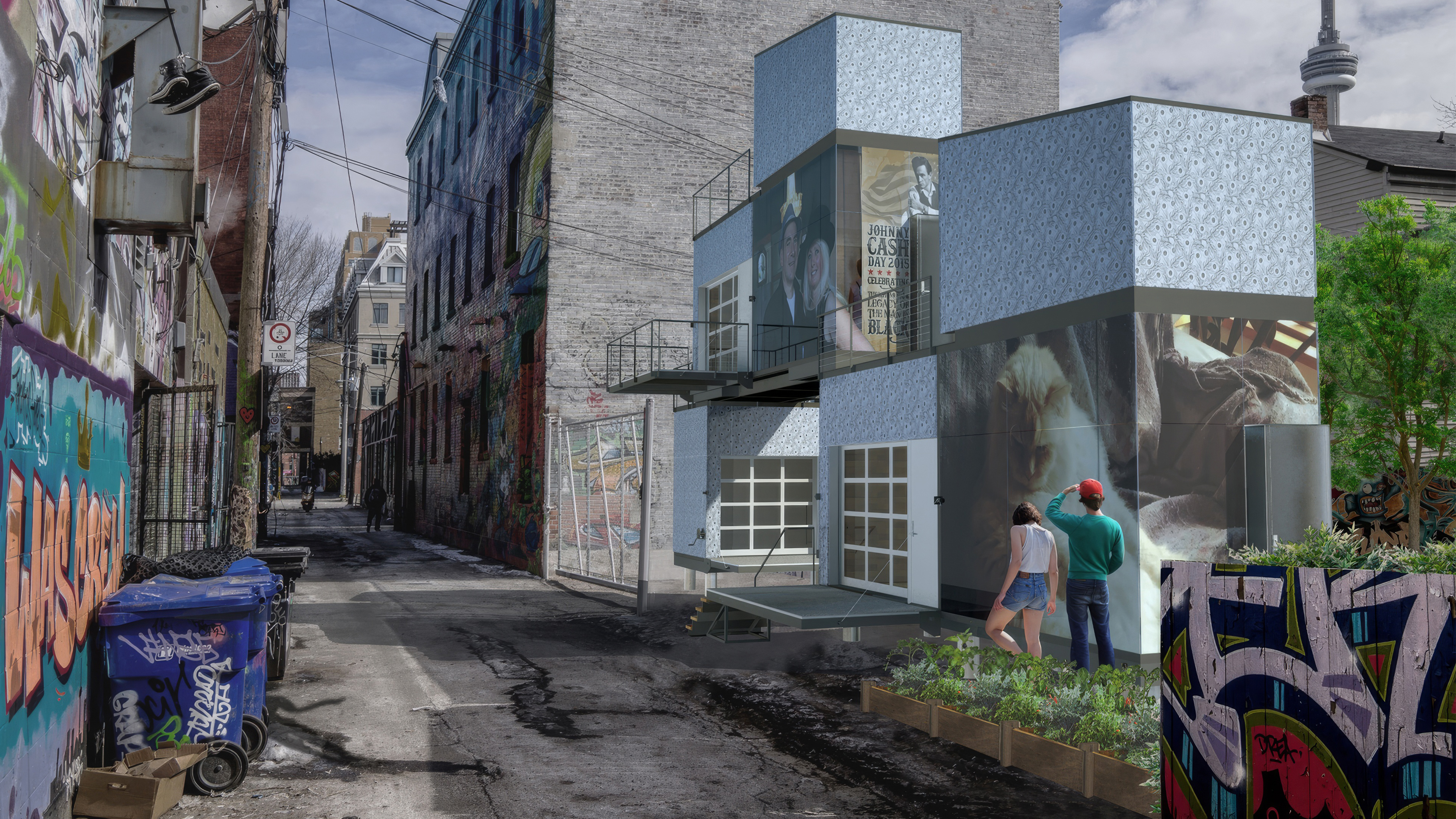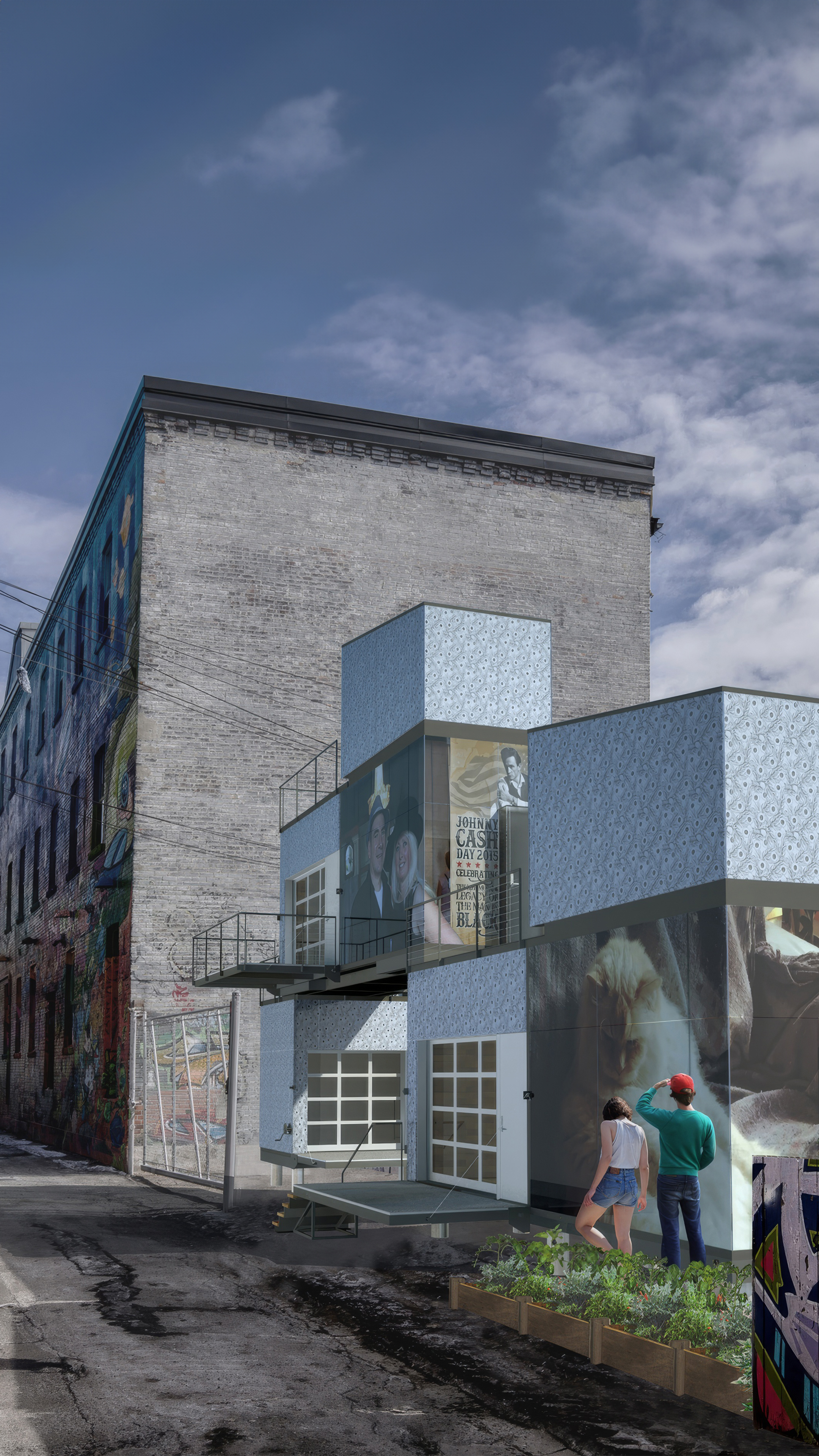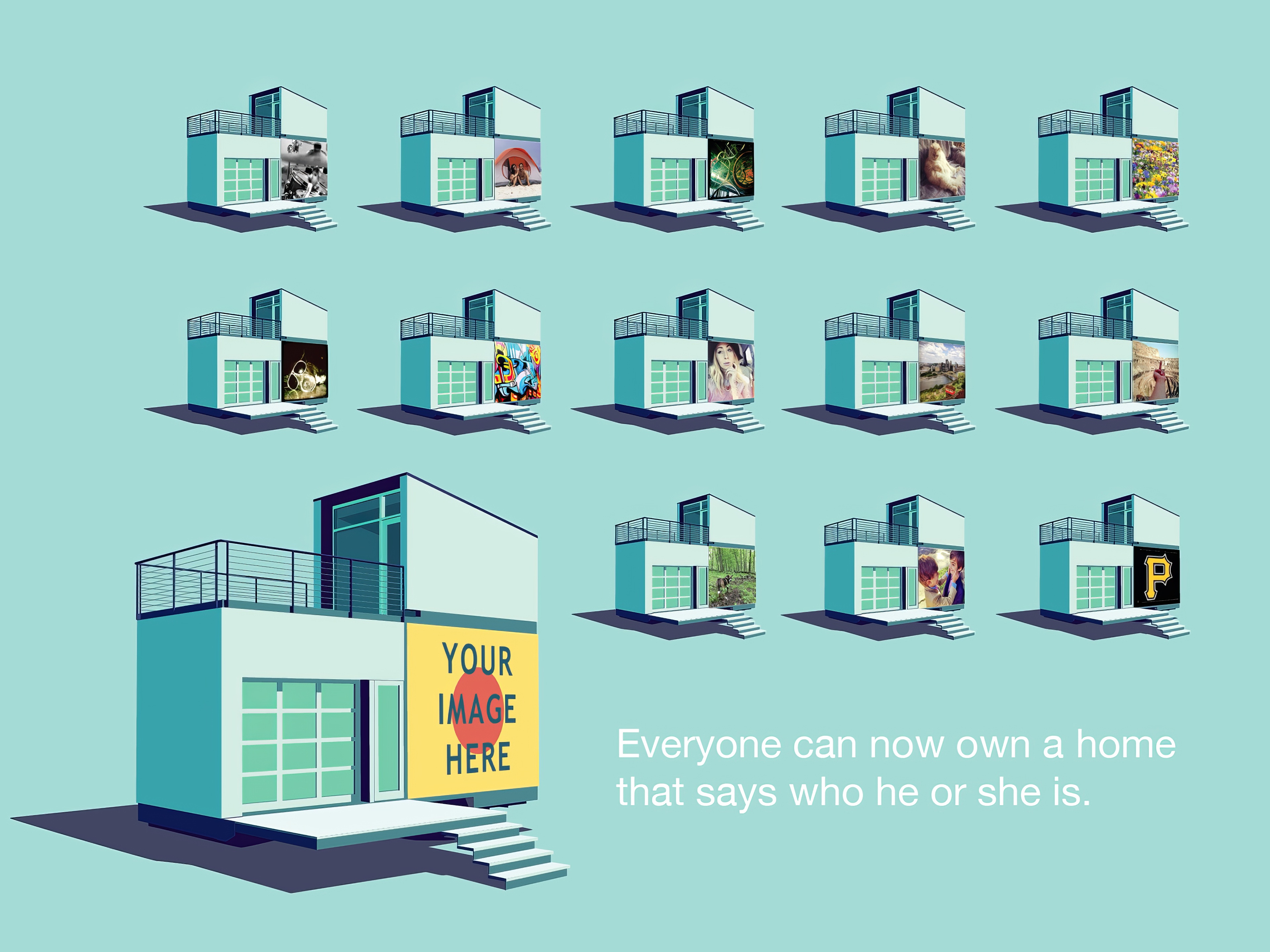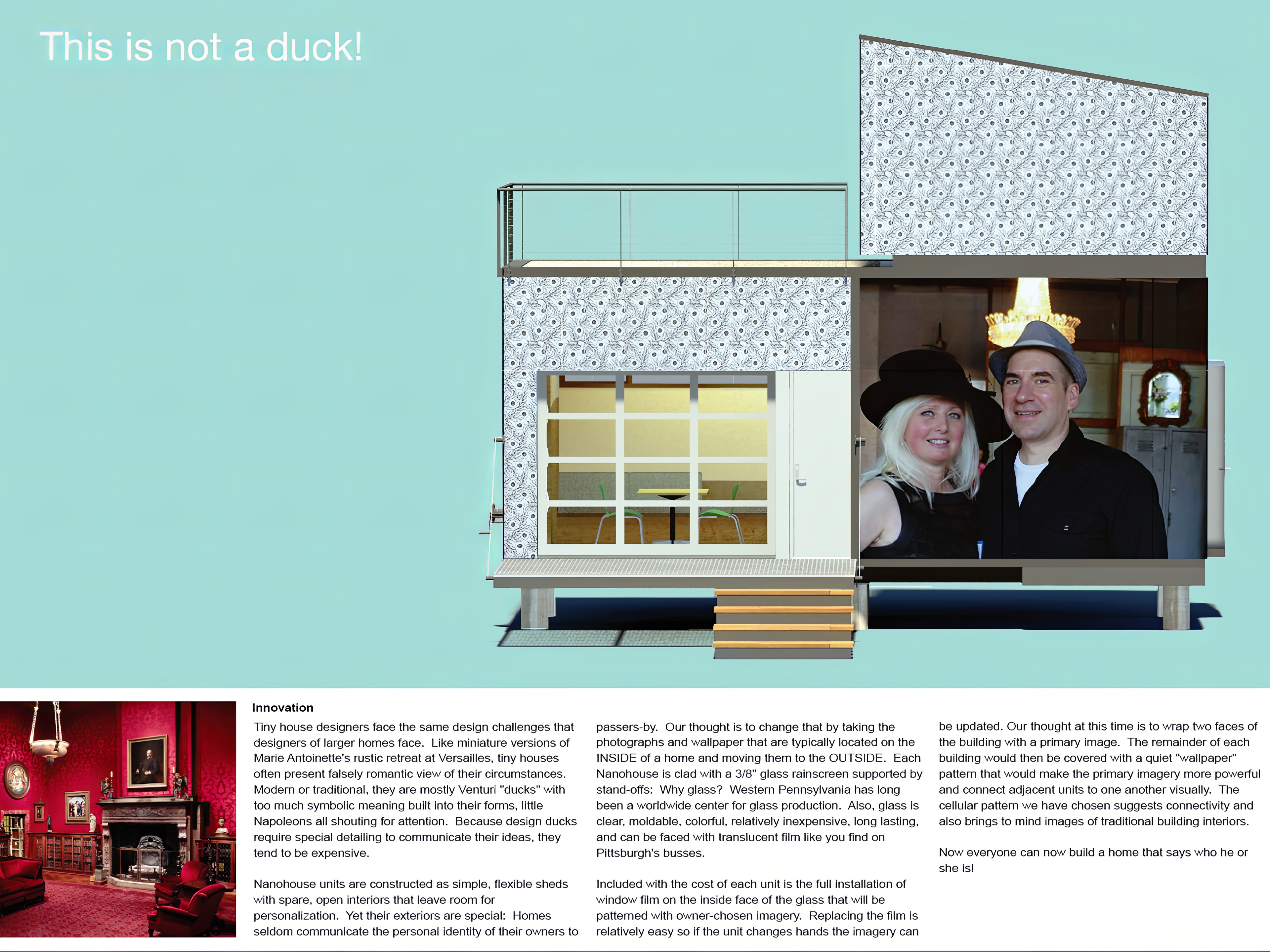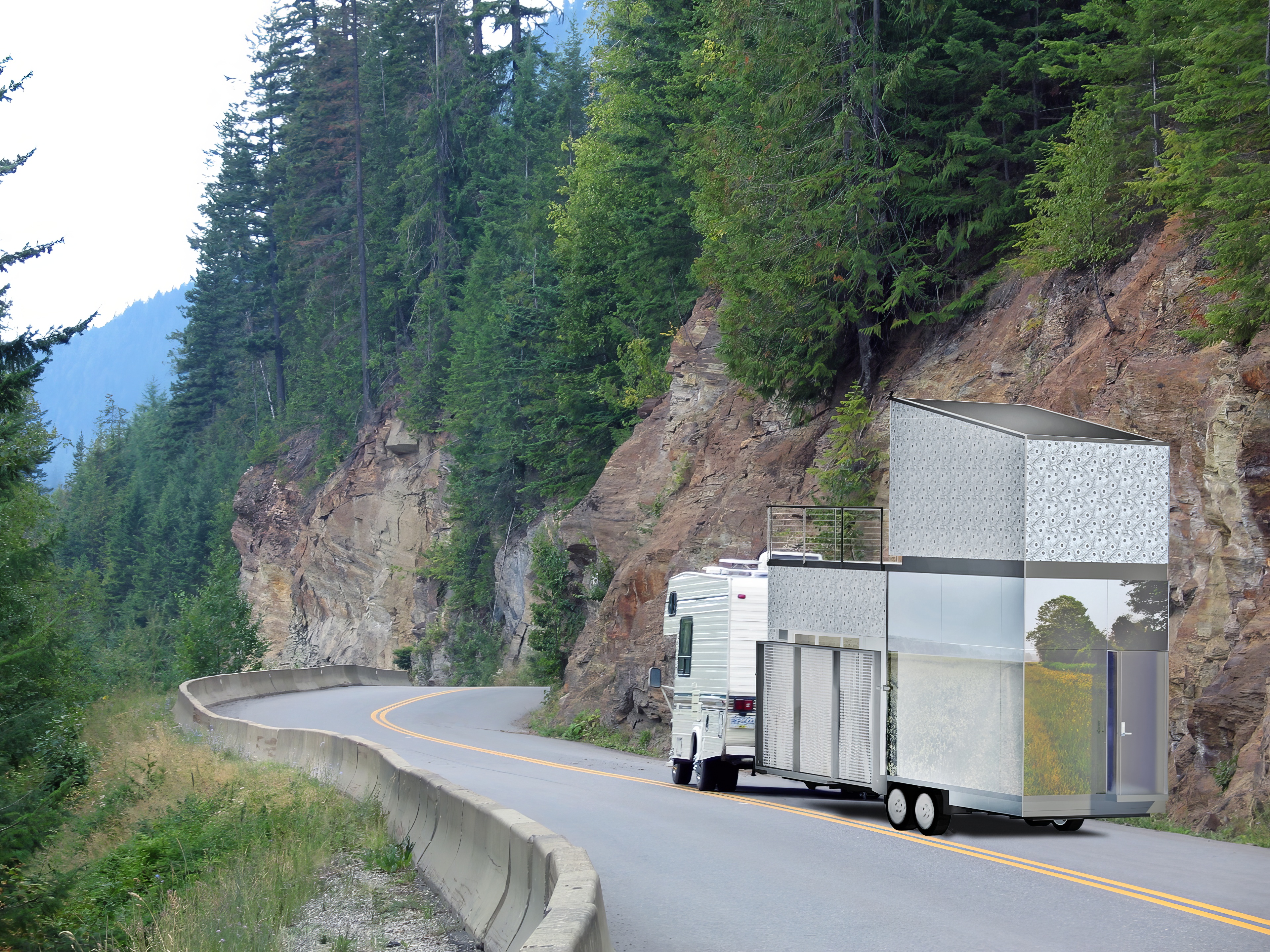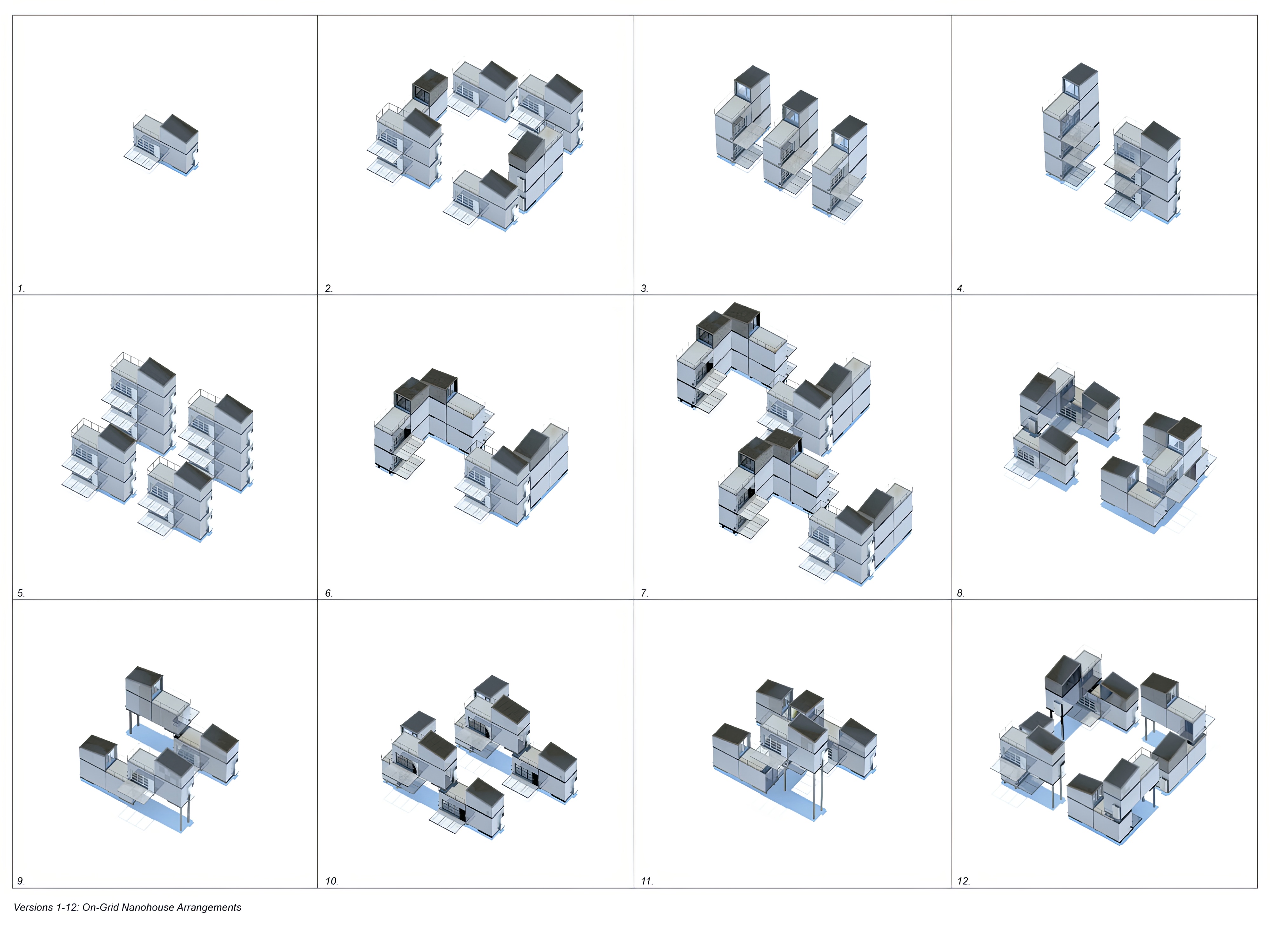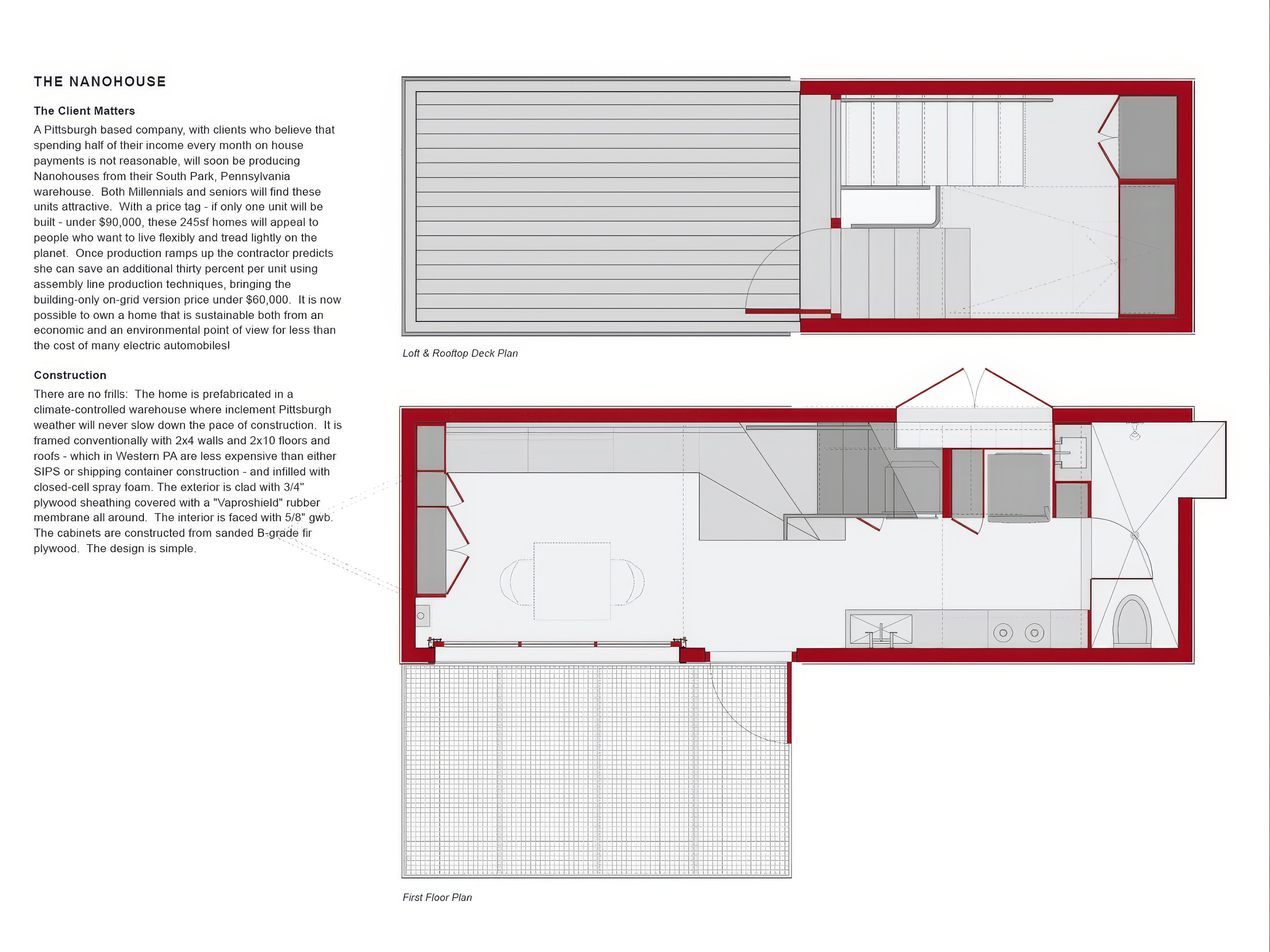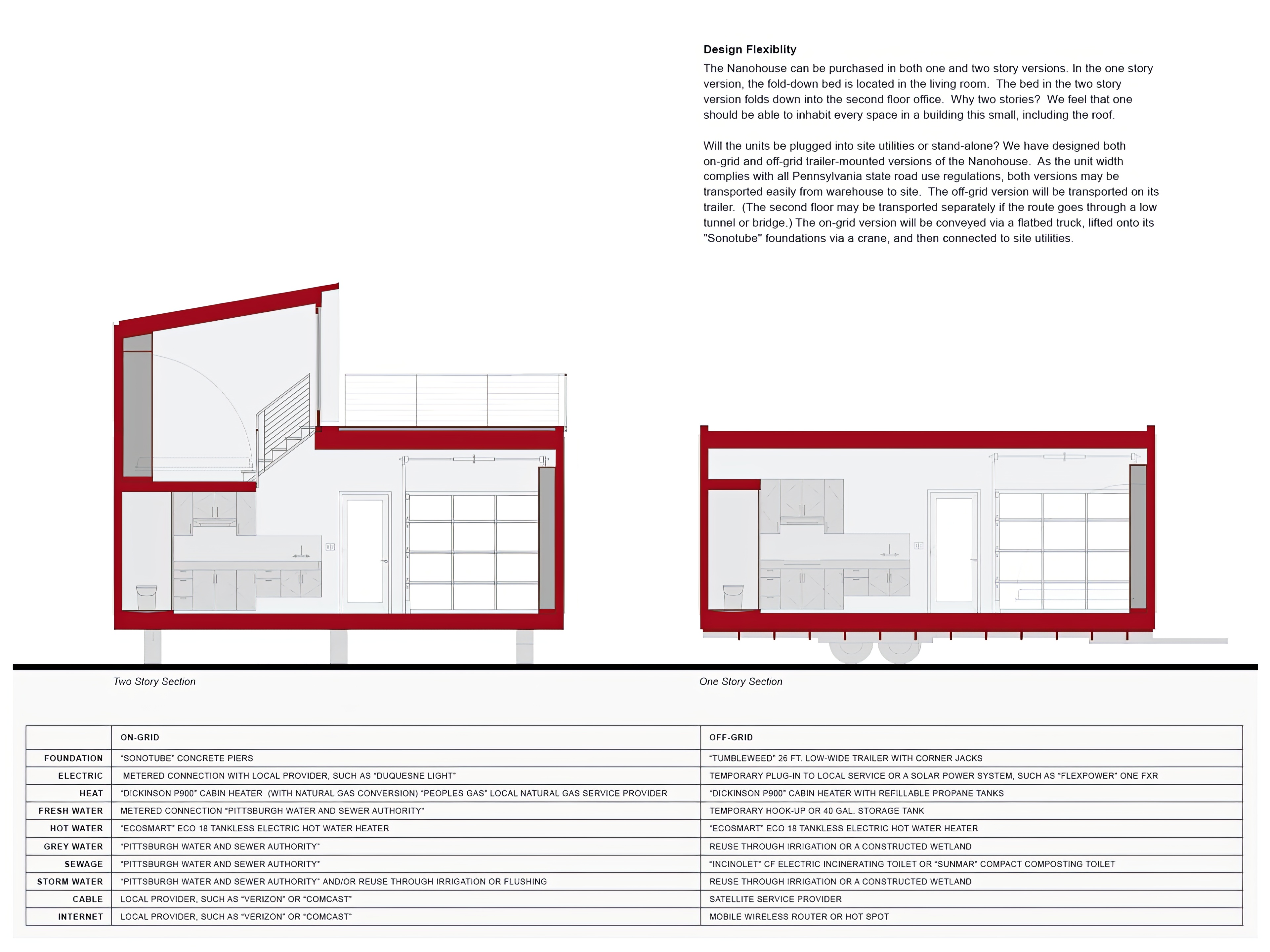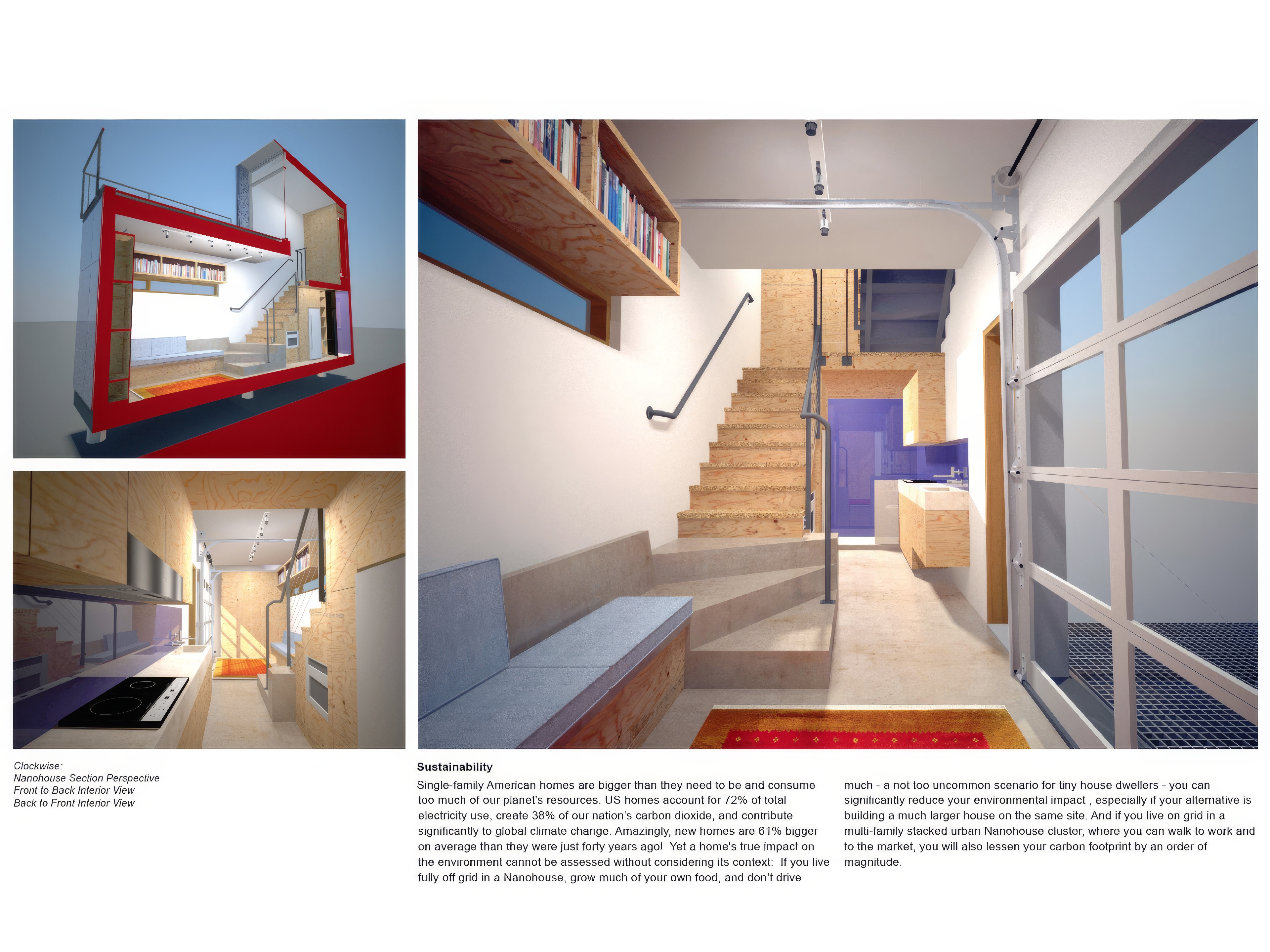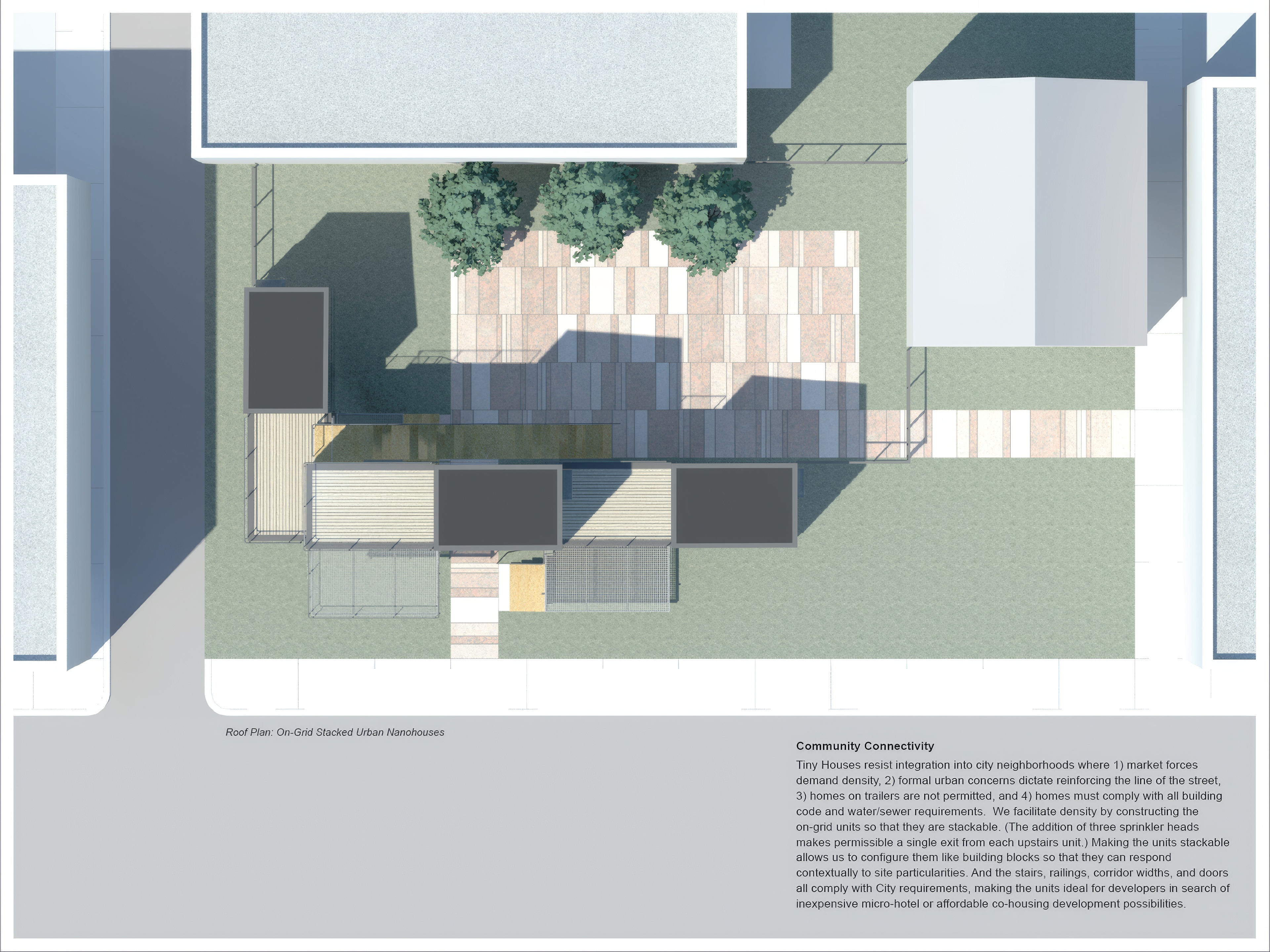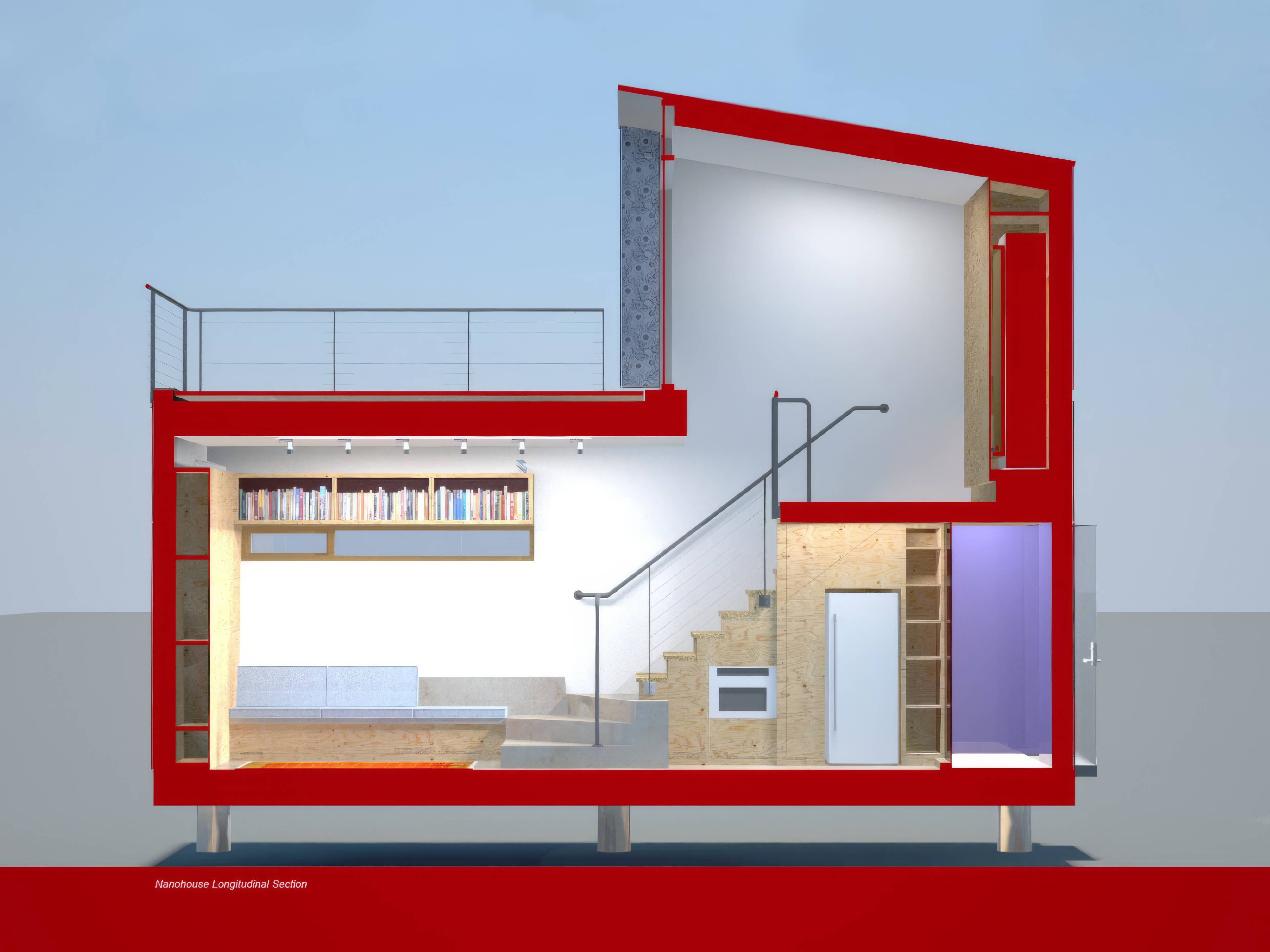Nanohouse
The 2024 price tag of these units is still under $100,000. These 245sf Nanohouses should appeal to people who want to live flexibly and tread lightly on the planet. It is now possible to own a home that is sustainable both from an economic and an environmental point of view for less than the cost of many electric automobiles!
There are no frills. We prefabricate the home in a climate-controlled warehouse where inclement Pittsburgh weather will never slow down the pace of construction. We facilitate density by constructing the on-grid units so that they are stackable, which allows us to configure them like building blocks so that they can respond contextually to site particularities.
Our Nanohouse units are simple, flexible sheds with spare, open interiors that leave room for personalization. Yet their exteriors are special: Homes seldom communicate the personal identity of their owners to passers-by. Our thought is to change that by taking the photographs and wallpaper that are typically located on the INSIDE of a home and moving them to the OUTSIDE.
Now everyone can now own a home that says who he or she is! For other Fisher ARCHitecture modular projects, check out our Shadyside Modular and Bowtie Modular projects.
Read More >What is a Tiny House?
Here is what the Tiny Home Industry Association has to say about tiny houses: Tiny houses offer consumers and their local communities several significant advantages, as compared to larger residences:
- Lower purchase price
- Lower construction material waste
- Reduced carbon footprint
- Significantly reduced energy consumption
All of these factors contribute to the prospect of greater sustainability and affordability.
Tiny homes also offer a convenient option to implement infill housing programs without the need for government-funded subsidies or increased property taxes for the surrounding communities. They are easy to locate, hook up, and maintain without negatively impacting community resources and services.
In addition, tiny houses offer immense flexibility of use. Clients can use them as starter homes, workforce housing, caregiver units, student housing, guest houses, or even as disaster recovery housing.
